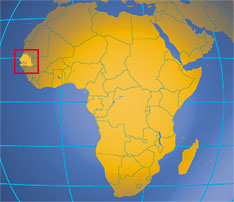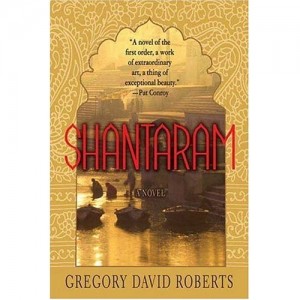Snapshots of Senegal
I hardly touched my camera while in the Senegal. But then in the southern river city of Ziguinchor I ever-so-briefly forgot that I was supposedly taking a photography break. Oops.
I hardly touched my camera while in the Senegal. But then in the southern river city of Ziguinchor I ever-so-briefly forgot that I was supposedly taking a photography break. Oops.
 The Wolof kingdoms of Senegal traded with the Portuguese as early as the 16th century, but it was the establishment of the French port of St. Louis at the mouth of the Senegal River that would change the country’s direction for the next few hundred years.
The Wolof kingdoms of Senegal traded with the Portuguese as early as the 16th century, but it was the establishment of the French port of St. Louis at the mouth of the Senegal River that would change the country’s direction for the next few hundred years.
Senegal offered the 17th and 18th century worlds two exports: slaves and gum arabic.
Generally speaking, it was the ruling class of Wolofs and their warriors that ventured inland to raid tribal villages for slaves, although of course the French military was present as a backstop of force, such as during the 1670 uprising. And although slavery was eventually abolished a century or so later, the flow of raw goods to make the colony pay for itself did not, with much of the country forced to cultivate groundnut for export.
By the 19th century, the repeated Islamic jihads from the Mali-based kingdoms further east progressively converted the Wolof kingdoms to Islam and against the French, and in response the French increasingly tightened their grip on their Senegalese subjects.
World War II proved a difficult time for the country. Initially blockaded by the Allies in order to cut off support to the German-backed Vichy French government, Senegal not only “helped” fund De Gaulle’s Free French forces, but also supplied some 100,000 combat troops that fought as part of the French-led West African Infantry, of whom some 25,000 lost their lives on Europe’s bloody battlefields.
Offered the choice by French president De Gaulle in 1958 of either total independence (with accompanied total severance from the French Union) or self-government within the French Union, the Senegalese for economic reasons voted for the latter. Two years later, however, De Gaulle relented and Senegal peacefully gained its independence from France without severing economic ties, and as such is one of France’s former colonies with the closest ties back to the old continent.
In 1981 Senegal’s inaugural president Leopold Senghor made history as the first African president to voluntarily retire (after over 20 years at the helm), passing on the office to his successor. Further elections continued amidst some controversy and conflict, until the 2000 election which was deemed by international observers to be free, fair and transparent.
Despite some remaining issues with corruption, unemployment and an on-again, off-again separatist movement in the southern region of Casamence, the Senegal is one of West Africa’s more prosperous countries. Economic reforms such as the elimination of government price controls and subsidies liberated the economy and encouraged investment, and Senegal’s economy is now one of the fastest growing in the world. Fishing, chemicals and textiles have supplanted groundnuts as exports (ironically, Senegal’s largest trading partner is India, the country I just flew in from, accounting for 26% of all exports), and as one of Africa’s most welcoming destinations, tourism has also substantially grown and added to the country’s success.
(Senegal’s most famous export, though, is probably its music, such as the mbalax form Wolof percussive popularized by Youssou N’Dour of “7 Seconds” fame, the 1994 hit single with Neneh Cherry.)
From a colonial legacy of slavery, the Senegal of today is in a wholly different world: largely considered one of Africa’s most stable political democracies, and held up as a political and economic example to follow across the continent.
Pascal: An unforgettable experience going through the sights, sounds, scents and rich history of the most visited part of India.
This video would have been up sooner but my editing program refused to process the final product. A couple hours of tweaking clips, keyframes and settings finally resolved the problem. By the way, these higher quality and resolution videos can be painfully choppy even on new computers and broadband. If that’s a problem try the lower resolution.
The background music was found using sites with music licensed under Creative Commons: Close My Eyes by Natacha Atlas, Larsen by Atomica and Cavern of Time by Butterfly Tea. Many artists there are worth checking out and supporting.
Watch in HD / lower resolution
 As much as I hate to say it, sometimes you need to take a little break.
As much as I hate to say it, sometimes you need to take a little break.
80 days of continuous travel through 8 countries. 149 cumulative hours on 42 different buses, 50 hours on 8 trains, 40 hours on 12 airplanes, and 16 hours on a boat.
The constant search for a place to stay. In the two and a half months of travel, the longest I’ve stayed in one hotel is 3 nights. Never the comfort of home, of your own bed. And in some, outright discomfort: bad bed, smelly room, noisy street, too cold, too hot, mosquitoes, no hot shower, creepy neighborhood. Waking up in the middle of the night in a start: where in the world am I?
The hunt for adequate food. In some places relatively easy, but in others decidedly not. Menus (when they have them) in foreign languages. Waiters that don’t speak English. Hygienic conditions that are suspect. The occasional rebellion of your taste buds, or worse, of your stomach.
Living out of a backpack. A few clothes, a few possessions. No variety. The logistics of laundry, rendered all the more difficult by the constant moving.
The toll of human interaction. Fighting off hawkers, vendors, taxi drivers and con artists. Greeting the genuinely friendly and curious. Trying to correctly distinguish between the two. Introducing yourself for the thousandth time. Accosting stranger after stranger on the street, camera in hand, smile in the other. Reassuring the skeptical, mollifying the hostile. Knowing when to skedaddle.
The hassle of finding the right bus or train, elbowing through crowds, avoiding getting ripped off by taxis, worrying about your bags, your pockets, your funds.
Ah, but the adventure!
Nevertheless, after the frenetic pace of travel in India my arrival in the Senegal prompted a deep desire to simply rest for a bit. Crash, actually. And rest I did: found my way to the beach in Cap Skirring, in the south. Slept. Read a book or three. Went running and worked out on the beach every morning. Ate good food. Didn’t touch my camera.
Three days later, I’d had enough rest.
Back to the travel!
Here’s an update to the trip itinerary so far, with the route through Bangladesh and India added:
Pascal: The video companions to Sacred Ghats, Sacred Cows and The Holy City of Varanasi.
In case you were wondering how photographic masterpieces are created.
Pascal: A brief exploration through video to accompany The Rise and Fall of Calcutta and Into Calcutta’s Streets.
Pascal on the Rat Temple video:
This clip gets up close and personal in the presence of holiness. I for one was relieved that they did not worship large, hairy, jumping tarantulas with venomous fangs.
Figuring out the right settings for high definition (HD) on Youtube took a couple hours. It was well worth the time.
See also The Rat Temple of Karni Mata and Undead Rats.
I don’t know what compelled me to do it. I just couldn’t help myself: in various Rajasthani cities that we walked in, I took pictures of doors.
These are not localized in a special place. They’re simply random doors I came across while wandering through various residential areas, poor and rich alike. Almost every single one of them is the front door to someone’s house.
108 is a sacred number in Hinduism. So, fittingly, here are my 108 doors of Rajasthan:
 Or ten Indian books, that is, with a nod to Agatha Christie for the post title.
Or ten Indian books, that is, with a nod to Agatha Christie for the post title.
I made it a point to read ten books set in India during this trip. Luckily, there are some truly superb titles to choose from, and I tried to select award winners or runners-up as much as possible. Here are the ten I’ve read that I highly recommend:
Shantaram – Oh man. I read this one before the trip, and it’s one of my all-time favorite novels. Action-packed, this (supposedly) true account of an escaped Australian convict that settles in Bombay has it all, and a style and flow that keeps you gripped in to the end. The author manages to convey the feel of India like you’re there in Bombay’s slums and underworld right with him.
A Fine Balance – This book is just plain brilliant. Set during the difficult “State of Emergency” era of the 1970s, it chronicles the interweaving stories of four characters as they cope with fate and destiny. The story and writing are both haunting. Shortlisted for 1996 Booker Prize.
The White Tiger – This is one of the easiest and most fun reads of the bunch, the darkly comic story of a taxi driver’s escape from the chains of his fate. 2008 Booker Prize winner.
Q & A – Now known as Slumdog Millionaire, this is the story from which the award-winning movie was based. It’s another light and enjoyable read.
Sea of Poppies – Set in 1850s Calcutta at the height of the British opium trade, this lively novel does a wonderful job of bringing to life the life and atmosphere of the times. Shortlisted for 2008 Booker Prize.
Unaccustomed Earth – From Pulitzer-Prize winner Jhumpa Lahiri, this isn’t a book so much as a collection of unrelated short stories. None of them actually take place in India, but they’re all stories of Indians, strangers in a strange land. Heavy on the drama, but most certainly thought-provoking.
The Inheritance of Loss – Set in the Himalayas during the Ghorkali insurgency of the 80s, this book deals with the intertwined lives of several main characters coping with the difficulties of the times. 2006 Booker Prize winner.
The God of Small Things – This is a poetic but bleak story of tragedy unfolding for a pair of fraternal twins and their mother in small town India. 1997 Booker Prize winner.
Life of Pi – What a wonderful read this is! A 16-year old Indian boy from Pondicherry after his boat is shipwrecked finds himself on a small lifeboat with an orangoutan, a wounded zebra, a hyena and a Royal Bengal tiger. 2002 Booker Prize winner.
Autobiography of a Yogi – As the name implies, this isn’t a novel but an actual autobiography, that of Paramahansa Yogananda. A truly fascinating read and priceless window into the spiritual depths of India.